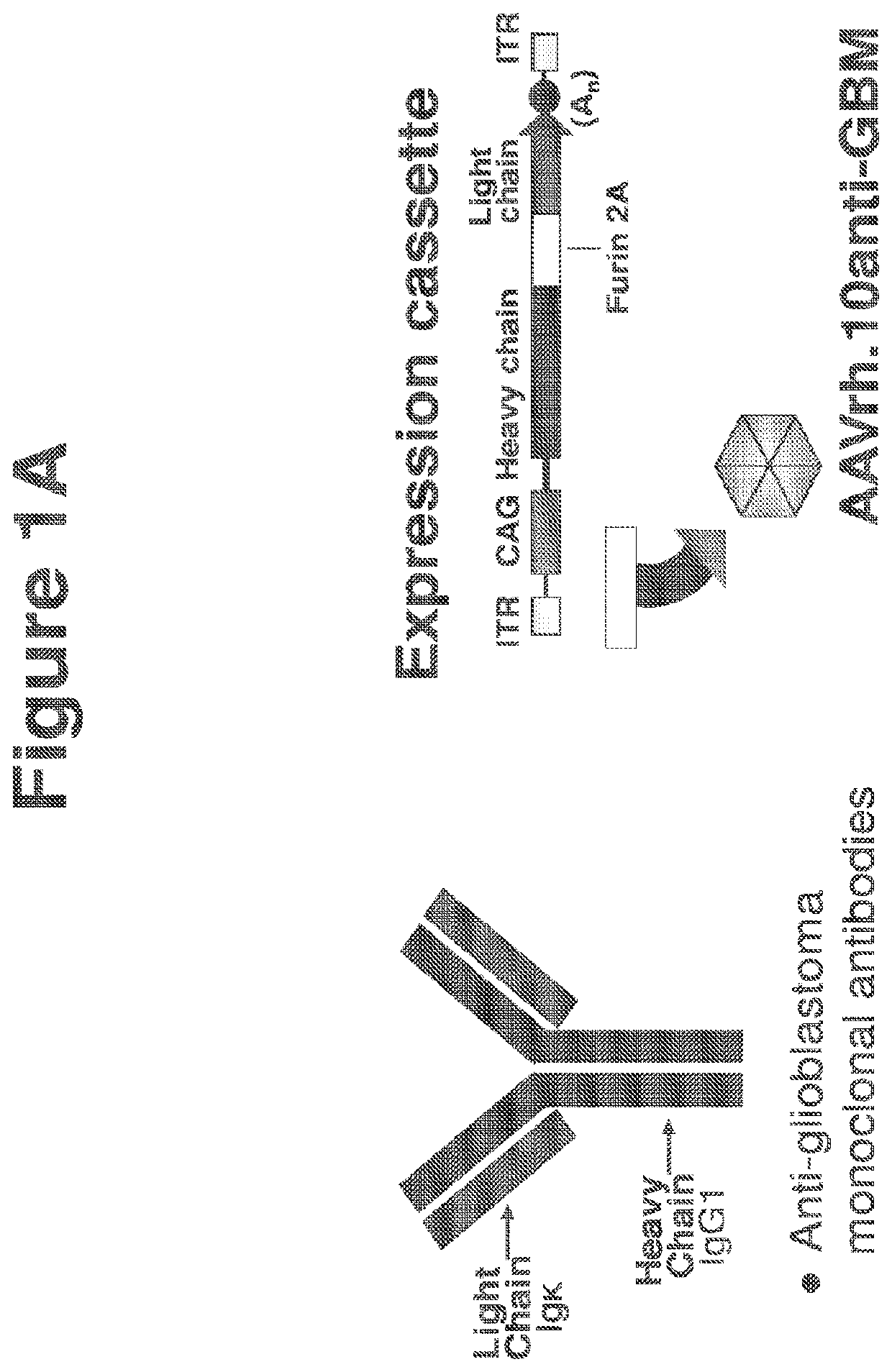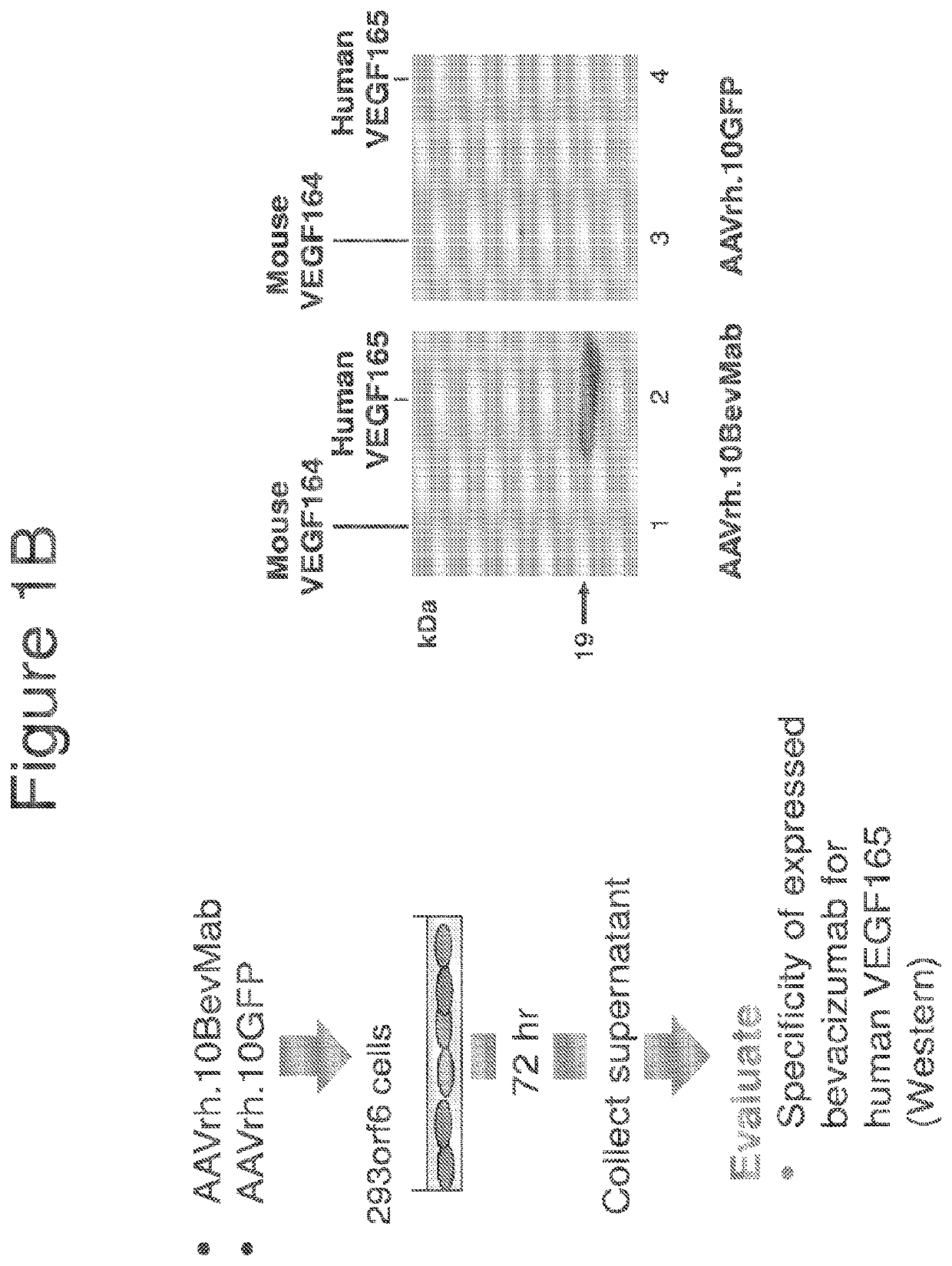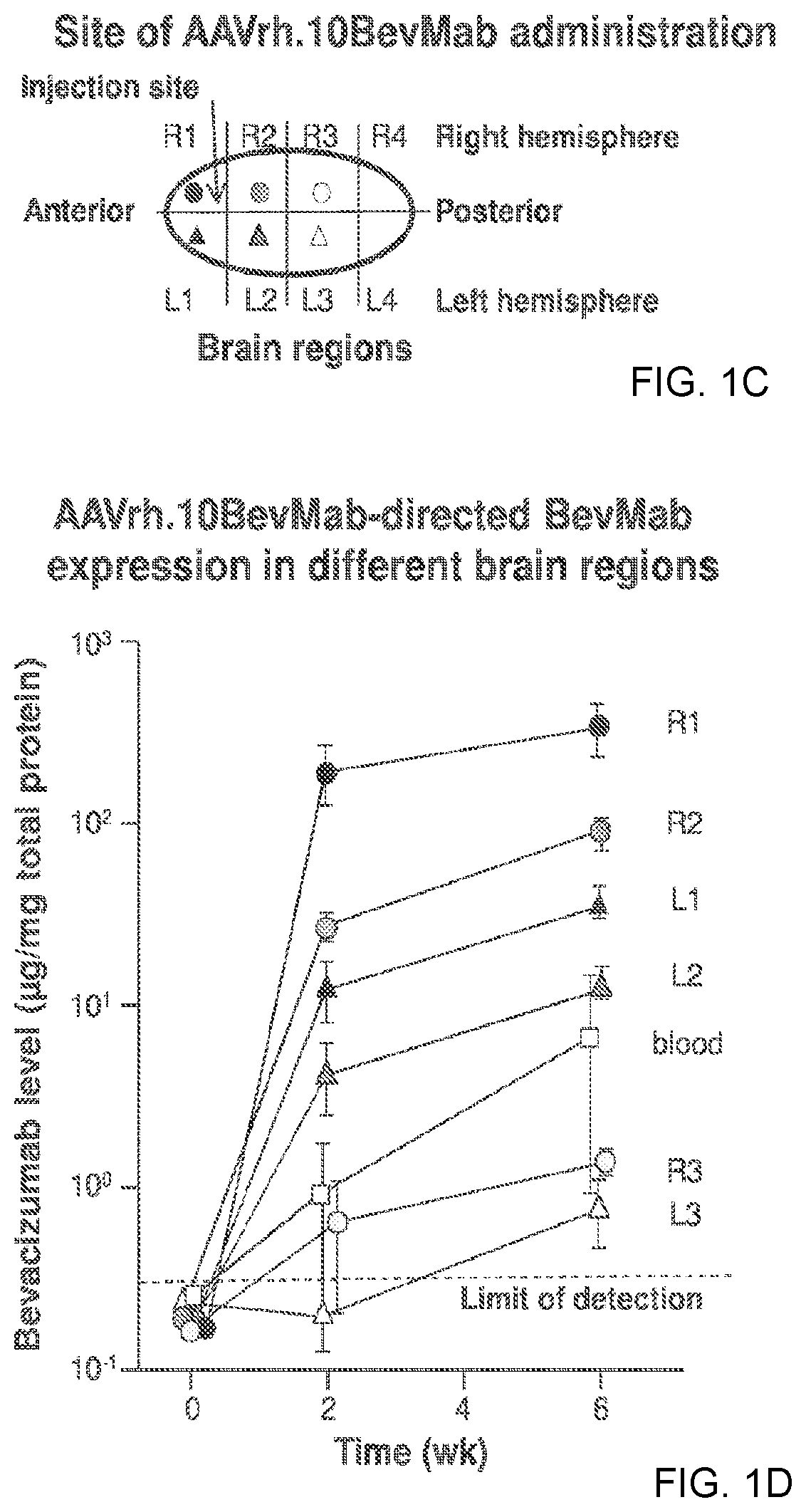Treatment of brain cancers using central nervous system mediated gene transfer of monoclonal antibodies
a central nervous system and gene transfer technology, applied in the field of brain cancer treatment using central nervous system mediated gene transfer of monoclonal antibodies, can solve the problem of not being able to surgically remove the entire tumor, achieve enhanced magnetic resonance imaging (mri), suppress the cns growth of human gbm, and reduce the average tumor growth of gbm xenografts
- Summary
- Abstract
- Description
- Claims
- Application Information
AI Technical Summary
Benefits of technology
Problems solved by technology
Method used
Image
Examples
example
[0130]Studies of human GBM have identified several biologic processes linked to the GBM malignant state. CNS administration of gene transfer vectors may be used to genetically modify neurons to continuously express therapeutic monoclonal antibodies or other protein molecules that will suppress the aberrant biologic processes fundamental to GBM malignancy. This approach circumvents the challenge of the blood-brain barrier, providing local production and thus high local levels of the therapeutic molecules in the CNS. Such a strategy was employed to bypass those barriers using CNS administration of adeno-associated virus (AAV) gene transfer vectors to deliver the genetic sequences for monoclonal antibodies, thereby modifying normal CNS cells to chronically deliver therapeutic monoclonal antibodies in the local milieu, which in turn suppress the growth of human GBM in the CNS. Because neurons do not turn over, the expression of the monoclonal is persistent, an important feature in treat...
PUM
| Property | Measurement | Unit |
|---|---|---|
| molecular weight | aaaaa | aaaaa |
| pH | aaaaa | aaaaa |
| pH | aaaaa | aaaaa |
Abstract
Description
Claims
Application Information
 Login to View More
Login to View More - R&D
- Intellectual Property
- Life Sciences
- Materials
- Tech Scout
- Unparalleled Data Quality
- Higher Quality Content
- 60% Fewer Hallucinations
Browse by: Latest US Patents, China's latest patents, Technical Efficacy Thesaurus, Application Domain, Technology Topic, Popular Technical Reports.
© 2025 PatSnap. All rights reserved.Legal|Privacy policy|Modern Slavery Act Transparency Statement|Sitemap|About US| Contact US: help@patsnap.com



